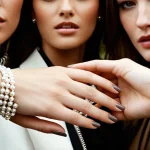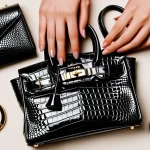The Struggle for Size Inclusivity and Proper Fit
Size inclusivity remains a significant challenge in the UK fashion landscape. Many mainstream UK brands offer limited size ranges, often focusing on small to medium sizes, which excludes a considerable portion of women who wear plus sizes. This gap creates frustration among shoppers who find that their body shapes and sizes are not adequately represented in the product offerings. Poor fit is more than a mere inconvenience; it can diminish confidence and discourage women from engaging fully with fashion.
The impact of limited size inclusivity extends beyond availability. When garments do not fit well, women experience discomfort and dissatisfaction, reducing the joy of shopping and limiting their choices. Fit issues also affect how clothing looks and feels, which directly influences self-expression through fashion. Recognising these barriers, some leading UK retailers have initiated inclusive sizing programs, expanding their size ranges to accommodate a broader spectrum of body types. However, progress is uneven, and many brands still fall short in meeting the needs of body diversity.
Topic to read : What are the Essential Fashion Pieces Every UK Woman Should Have?
Plus size fashion in the UK is evolving, but the pace must accelerate to ensure equitable options. For example, the demand for clothing that fits accurately and flatters diverse figures highlights the necessity for better design, more inclusive marketing, and dedicated plus size collections. As awareness grows, the spotlight is turning toward brands that prioritise size inclusivity and proper fit, allowing UK women of all shapes to enjoy fashion that celebrates their individuality.
Key Fashion Challenges Impacting UK Women Today
Despite growing awareness, UK women’s fashion issues remain complex and multifaceted. One core challenge revolves around size inclusivity, where mainstream retailers often offer limited size ranges that exclude many women. This scarcity not only reduces available options but also perpetuates feelings of exclusion and dissatisfaction among shoppers seeking clothing that fits well and reflects their style.
Also to discover : How Does the Evolution of Female Fashion Impact Social Dynamics in the UK?
Another major hurdle is the pressure from rapidly evolving fashion trends, heavily influenced by social media platforms such as Instagram and TikTok. These trends push women to frequently update their wardrobes, which can be both costly and overwhelming. The expectation to stay fashionable amid shifting styles creates stress and contributes to unsustainable consumer habits.
Moreover, lack of diverse representation in UK fashion advertising intensifies these challenges. When campaigns predominantly feature narrow body types, ethnicities, and ages, they fail to resonate with a wide audience. This underrepresentation affects consumer confidence and self-image, making many women feel invisible within the fashion landscape. Efforts to tackle these problems are underway but progress is gradual.
Addressing these modern fashion problems requires a holistic approach—expanding size ranges, embracing diversity in media, and encouraging sustainable consumption can collectively improve the fashion experience for UK women today.



